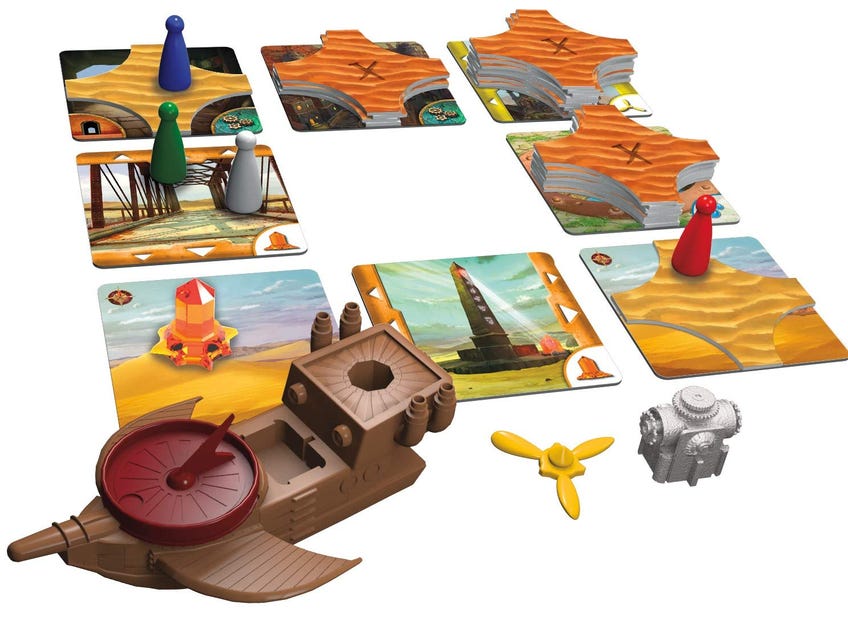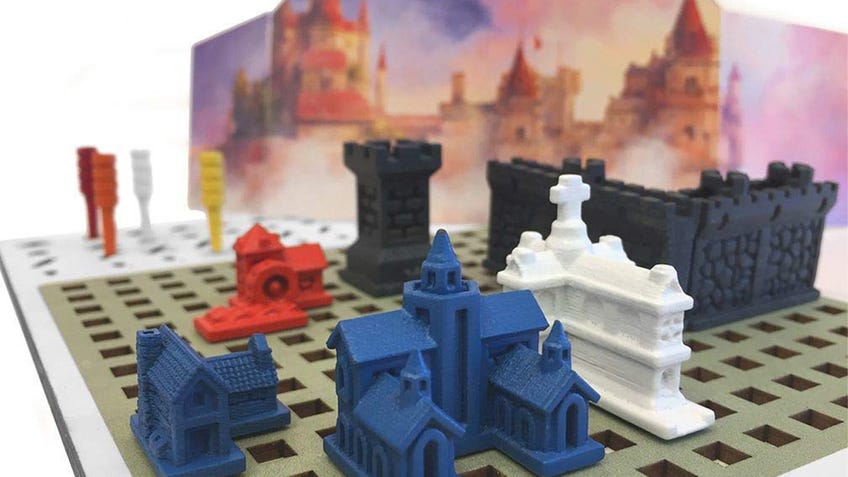"It's difficult to keep things fresh": Pandemic creator Matt Leacock on Legacy, co-ops and Lego
A viral success.
The co-op board game that has since spawned a bevy of imitators, spin-offs and expansions, and helped fuel the legacy board game trend, Pandemic became a worldwide board game phenomenon shortly after its release in 2008. Behind the groundbreaking game was then little-known software engineer and designer Matt Leacock, who was catapulted into tabletop stardom by Pandemic’s viral success. Today, Leacock is one of the most acclaimed and recognisable board game designers working in board games, with Pandemic one of the most successful modern board games in decades.
Pandemic’s creation was actually sparked by Leacock first playing another classic co-op board game, Reiner Knizia’s Lord of the Rings, which had been released at the turn of the millennium. One thing that Leacock noticed about Knizia’s game was that it was fun to play regardless of whether you won or lost. The experience inspired him to design a game that would have a similar appeal. This is the fountain from which Pandemic sprang.
After around three years of development, in which Leacock paid close attention to players’ reactions during playthroughs and carefully built Pandemic’s challenging gameplay in response to player feedback, he felt satisfied he had created a board game where people could have fun losing. The trick was to balance the challenge of Pandemic in such a way that the tension remained high and the prospect of winning was always close enough that players could see where they went wrong and want to try again.

“If it's a close loss or you could actually see yourself making better decisions, then it's just another reason to play again,” Leacock says.
Despite the positive reception to games such as Lord of the Rings, co-operative board games were still a fairly untapped genre by the time Pandemic debuted eight years later. The tabletop community had still yet to attach itself to a widely popular co-op game - an opportunity Leacock was primed to take advantage of.
“I think that the market was ready for a co-op,” he says.
Before Pandemic grew into the hit franchise it is today, in the game’s early days Leacock was simply happy celebrating the smaller successes, such as publisher Z-Man Games agreeing to go ahead with a revised second edition. Eventually the game became popular enough to garner multiple expansions, new versions and several spin-offs, but from Leacock’s perspective, it was a gradual gathering of momentum.
“It just kind of naturally organically grew from the beginning,” he recalls.
With all the newfound attention the series was receiving, the biggest challenge for Leacock soon became finding new ways to approach the Pandemic formula. Putting out a new release as often as every year meant increasing the risk of things becoming stale, so the designer focused on making each entry as distinctive as possible, such as adapting the board game into a dice game, Pandemic: The Cure.
A couple of years passed and I started sketching some ideas and it just seemed like the game needed to happen.
“It's difficult to keep things fresh,” he admits.
Luckily enough for Leacock, the opportunity to develop something almost entirely new was waiting just around the corner.
“We were thinking of different ways to bring more Pandemic and early on we were laughing about doing a Pandemic legacy game,” he says. “I don't know what it was. It just felt like too much of a daunting project.”
When the time came to dream up new entries in the Pandemic franchise Leacock decided to reach out to Rob Daviau, designer of Risk Legacy, with the intention of creating a legacy game in the Pandemic series. With Risk Legacy, Daviau had taken the classic wargame in an entirely new direction, adding an ongoing campaign where consequences and player decisions carried across multiple games and choosing factions’ abilities had potentially permanent repercussions for players. With this level of experience Daviau seemed like the perfect creative partner for designing a similarly innovative Pandemic title.
“A couple of years passed and I started sketching some ideas and it just seemed like the game needed to happen,” Leacock says.

Daviau was interested in the project and the two designers soon embarked on a development period that would last around 14 months. During this time Leacock and Daviau experimented with a number of ideas, devising a game to be played over multiple chapters. As with the original Pandemic, they used regular rounds of playtesting to carefully construct a legacy game that would feel challenging but still give players a good nudge in the right direction if they ever struggled - this time, by offering players helpful benefits if they lost multiple times during their campaign.
In Pandemic Legacy, players now fought back the game’s numerous spreading diseases over a series of multiple sessions - anywhere between 12 and 24 individual playthroughs, depending on the group’s wins and losses. The campaign took place during one in-game year, with each month consisting of one or two games - should the players fail to complete the objectives in the first instance, they would be given a second chance to succeed with increased funding to help.
“One of the primary concerns is that you might break the game halfway through and not be able to finish,” Leacock recalls. “So we built in some negative feedback loops in.”
We had absolutely no idea that the game would do as well as it did and garner so much excitement.
Among Leacock and Daviau’s biggest challenges was having to create a board game with almost no reference points to draw from. At the time, Risk Legacy was the only other game of its type. Having to take your cues from a game in an entirely different genre - and a competitive one, rather than a co-op - made things tricky for the designers, but they took it in their stride.
“We didn't have a whole lot of other games to compare ourselves to,” Leacock acknowledges. “It was very exciting, because it's a very rich playground. There's so many different things you can do with the story, components and surprises.”
In some ways creating a legacy game without many contemporaries had its advantages, as the lack of defined rules gave way to some examples of innovative game design. The reason Pandemic Legacy: Season 1 has ‘dossiers’, where players peel open windows to reveal new stickers and rules, is because the factory couldn’t make the sticker cards Leacock and Daviau had originally envisioned.
“It was such a delight having this problem lead to this fun form factor in the final product,” Leacock says.
The designers’ first big decision was to decide how the game was going to play over several connected sessions, which was eventually inspired by an entirely different medium altogether.

“We started kind of figuring out how to break it into scenes, almost like you're developing a TV series or a season for a series, and each game became kind of episodic,” Leacock reveals.
As with a bingeable show on Netflix, Leacock and Daviau structured Pandemic Legacy: Season 1 in a way that would have each session seamlessly weave into the next, giving players plenty of incentives to keep coming back. The thrill of cooperatively overcoming one world-ending hurdle would carry players through the game both on an emotional and mechanical level.
“One of the things we learned was that if we presented a really big challenge in one episode, it could end with some tools for dealing with the next one,” Leacock says. “Then you open up the next game really excited because you know how to handle that problem you just faced in the previous game.”
Pandemic Legacy’s story was carefully crafted to keep players invested in where the campaign was going next, with high stakes that continued to build throughout the narrative and plenty of twists and turns that even Leacock and Daviau didn’t see coming at first.
It gives you an excuse as an adult to basically play with something that feels like Lego.
“We didn't have the full picture of what the story would be at the beginning and we surprised even ourselves as we were going along,” Leacock says.
All this hard work led to the creation of Pandemic Legacy: Season 1, the success of which - including dethroning the acclaimed Twilight Struggle as the highest-ranked title on BoardGameGeek - took both Leacock and Daviau completely by surprise.
“We had absolutely no idea that the game would do as well as it did and garner so much excitement,” Leacock admits.
Since Pandemic Legacy’s release in 2015, Leacock has successfully designed a cornucopia of different board games including Forbidden Sky - the latest entry in his series of co-operative board games aimed at a slightly more casual players - and his latest release Era: Medieval Age, a ‘roll-and-build’ successor to his earlier title Roll Through the Ages where players compete to raise the best medieval city by arranging plastic buildings on a grid. Being able to create a game where people play against each other has been quite the refreshing experience for Leacock.
“I've been spending so much time on the co-op side,” he says.
As with Pandemic Legacy: Season 1, Era’s creation wasn’t so straightforward, with huge changes being made fairly far along in the board game’s development cycle. The game was originally intended to be a roll-and-write game in a similar vein to Roll Through the Ages: The Bronze Age. However, a last-minute decision led to Era using physical pieces to represent its buildings instead of just pen and paper.

“They enjoyed playing it but we looked at it on the table and it looked kind of flat,” he says. “So the publisher was like, ‘What if it was a three-dimensional game?’ And I'm like, ‘Wow, that sounds amazing.’ And I had just bought a laser-cutter.”
The new version of Era took a little longer to get out the door, but Leacock felt that the pieces players used to lay the foundations of their medieval towns gave the game a wonderful toy-like quality.
“It gives you an excuse as an adult to basically play with something that feels like Lego,” he says.
The change also served a practical purpose. Players now had a more visually striking way of being able to watch what their opponents were building.
“It’s so dimensional and so colourful,” Leacock says. “You don't have to squint to make out what they scrawled on their piece of paper [unlike other roll-and-writes].”
With Era on tables, Leacock has been working on Pandemic Legacy: Season 3, which is due to be released in 2020 after more than two years of development alongside Daviau. He also reveals he’s currently working on a new untitled dexterity board game.
Leacock may have been responsible for one of the biggest board games of the last decade, but his projects since show that he refuses to let Pandemic’s success dictate his entire career. With the Forbidden series, Roll Through the Ages and Era: Medieval Age, Leacock has proved that, whilst Pandemic might have been his first big break, when it comes to games design he’s no one-hit wonder.

